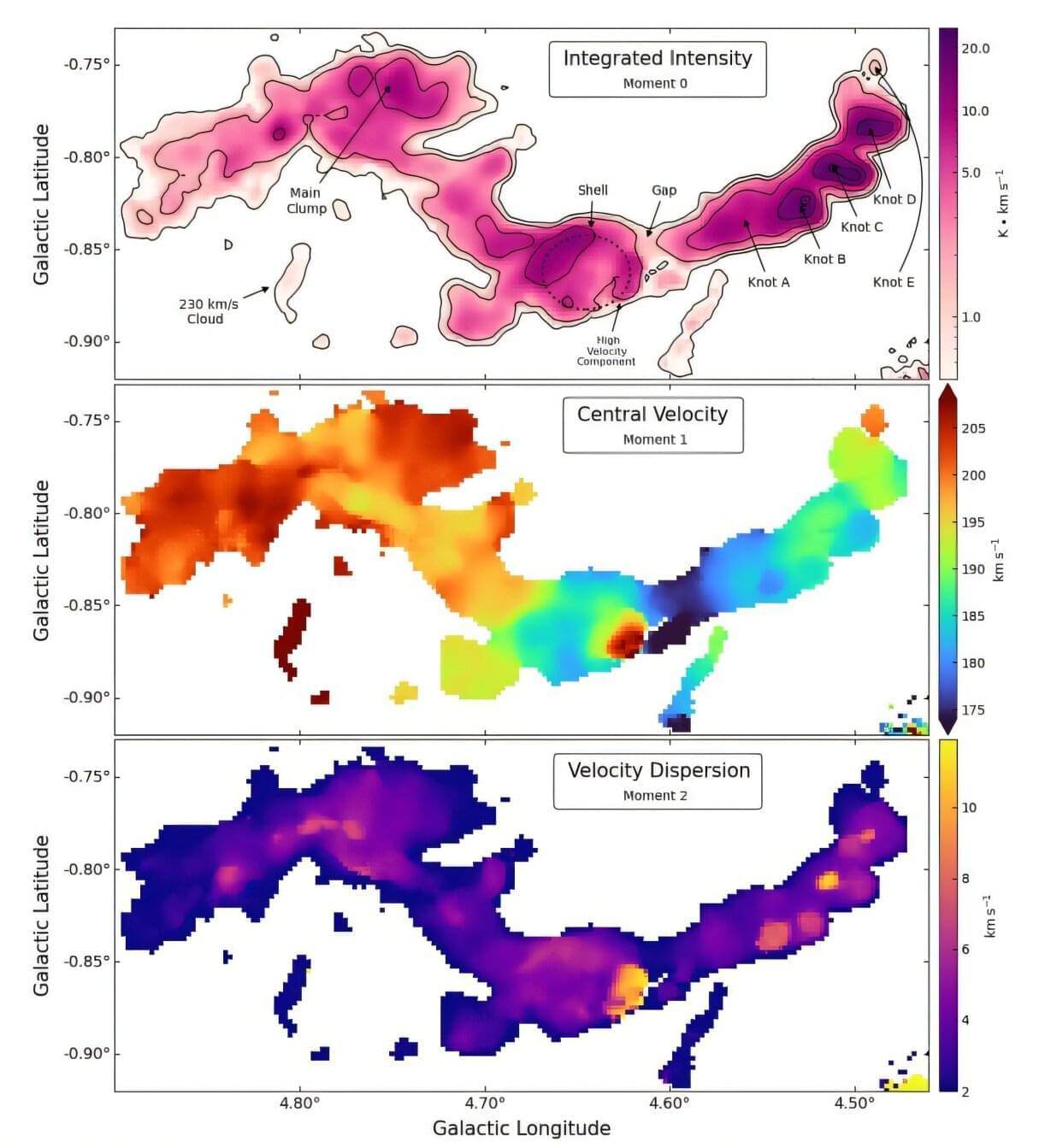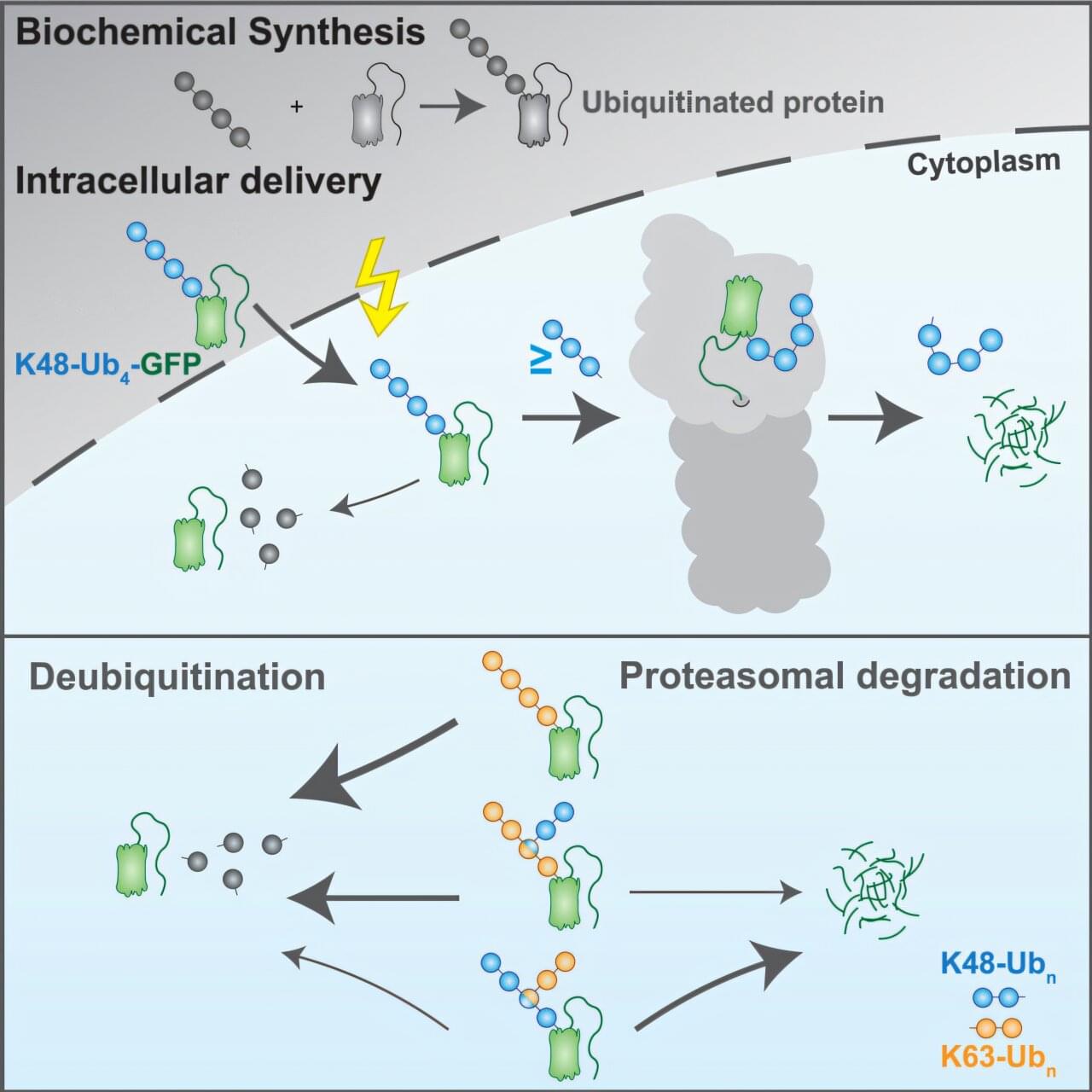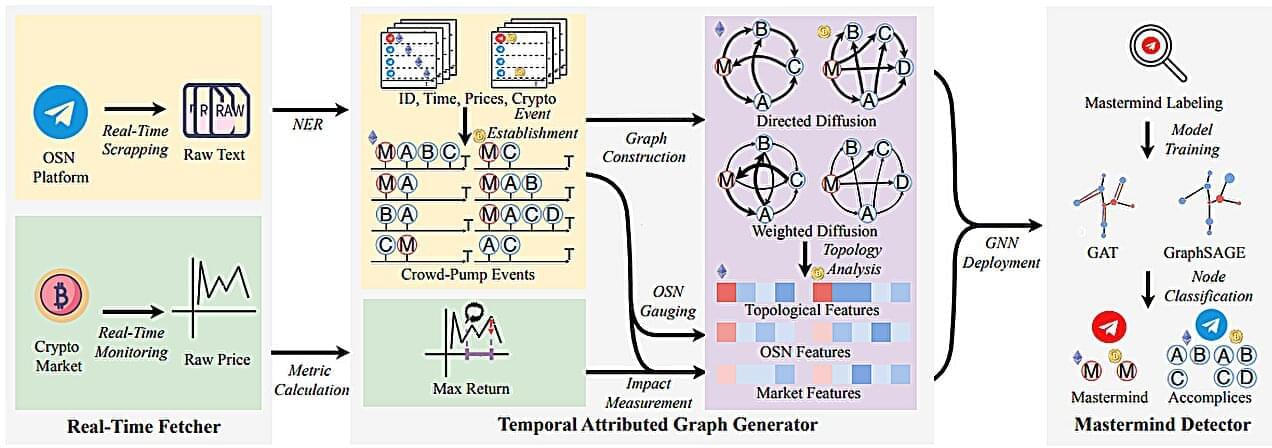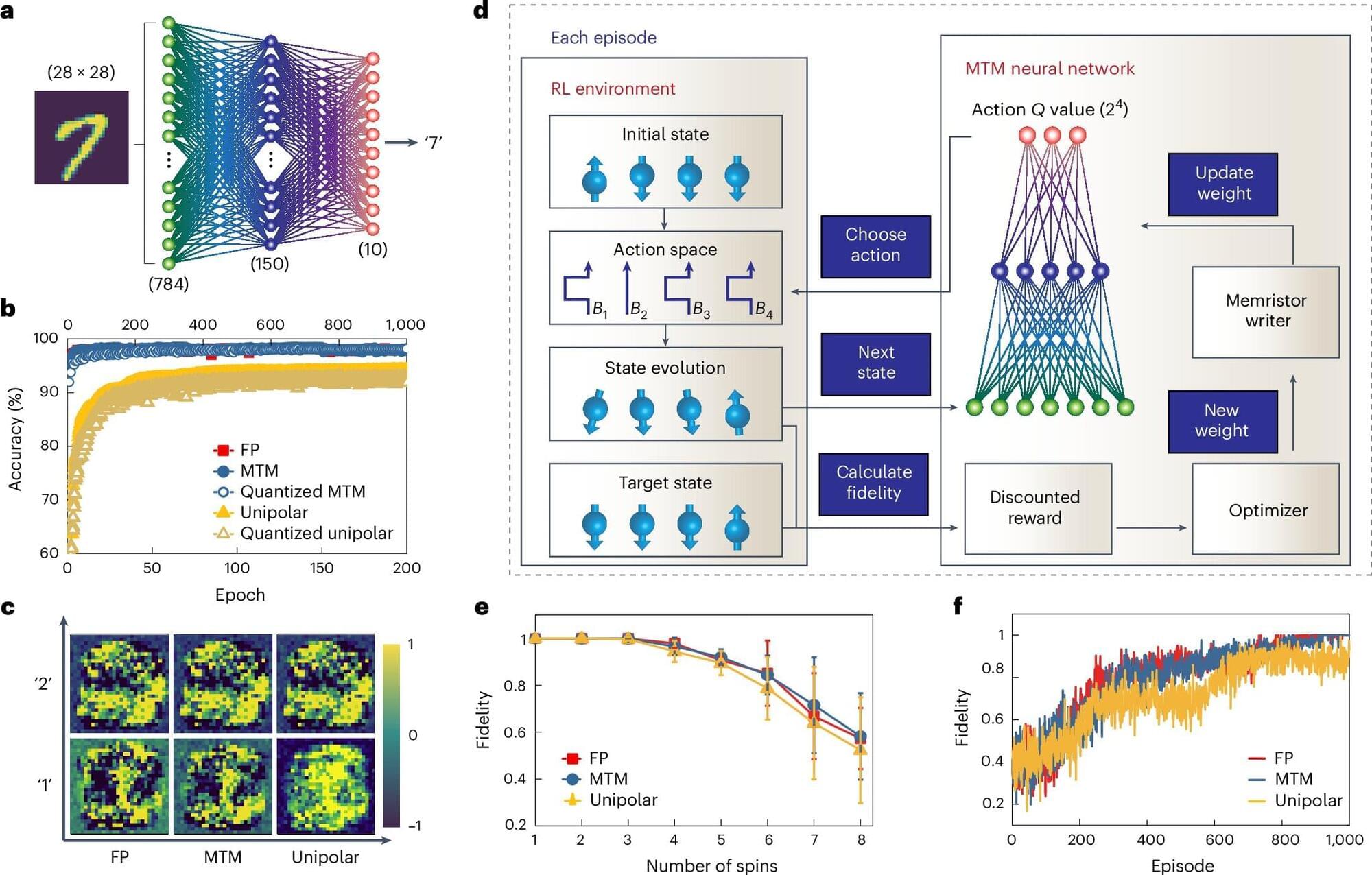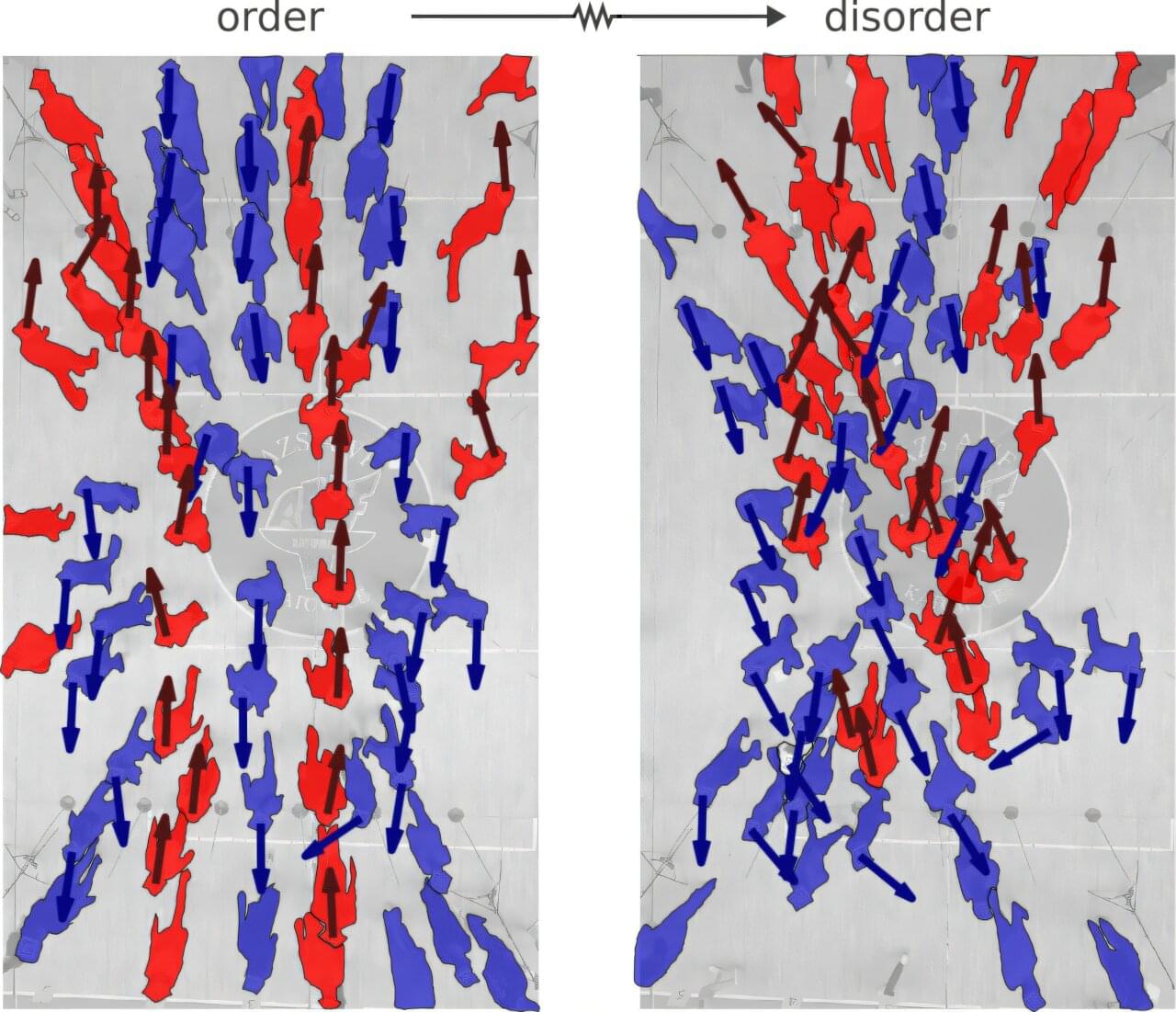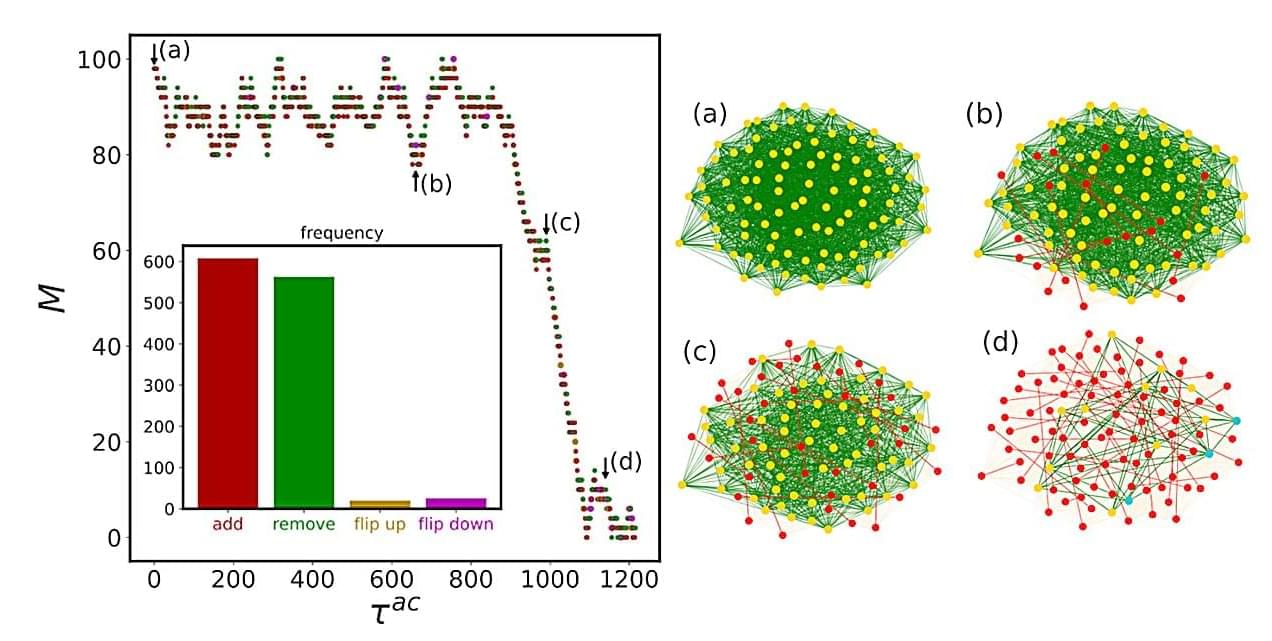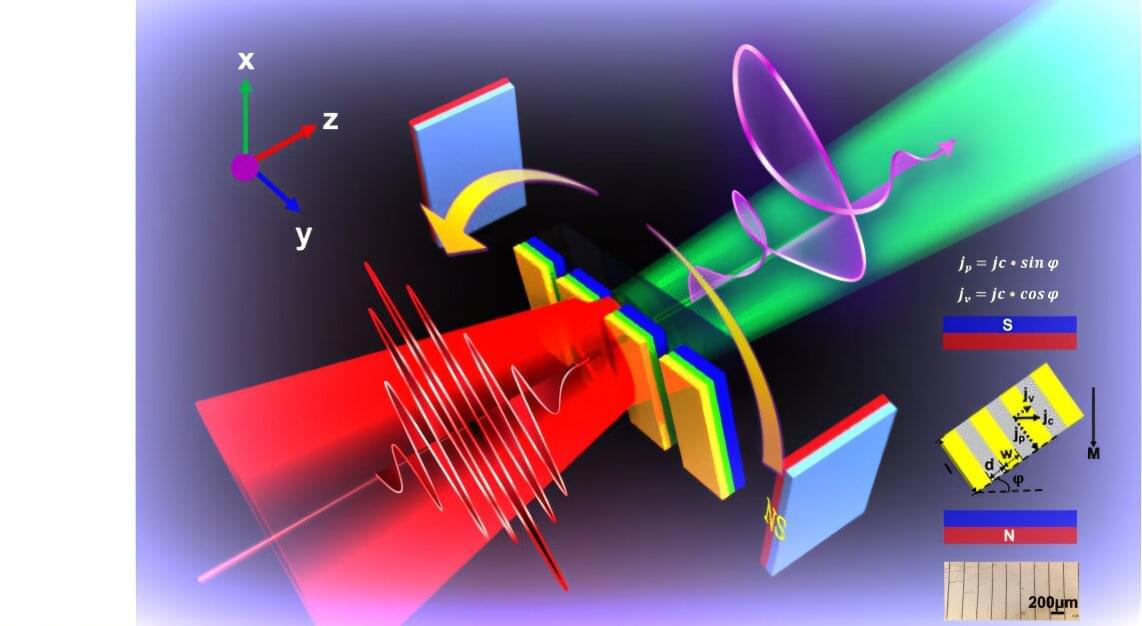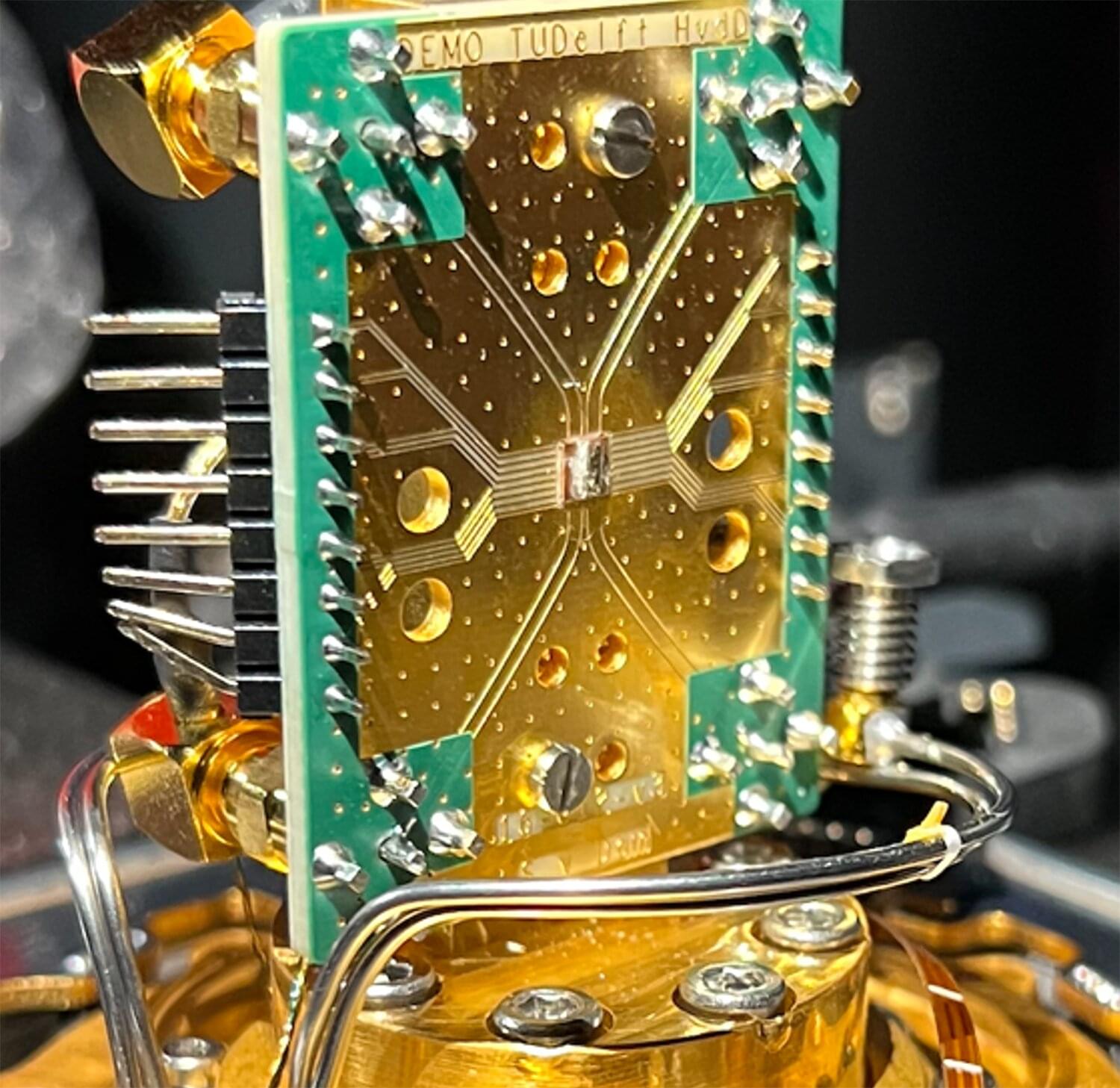Using the Green Bank Telescope (GBT), astronomers have detected a new giant molecular cloud in the Milky Way galaxy. The newfound cloud has a size of nearly 200 light years and its mass is estimated to be some 160,000 solar masses. The finding was reported in a paper published March 18 on the arXiv preprint server.
Molecular clouds are huge complexes of interstellar gas and dust left over from the formation of galaxies, composed mostly of molecular hydrogen. Molecular clouds with masses greater than 100,000 solar masses are called giant molecular clouds (GMCs). In general, GMCs are 15–600 light years in diameter and are the coldest and densest parts of the interstellar medium.
GMCs are gas reservoirs where most star formation takes place. Therefore, studying their lifecycle and characteristics is crucial to advancing our knowledge about the formation and evolution of galaxies.
